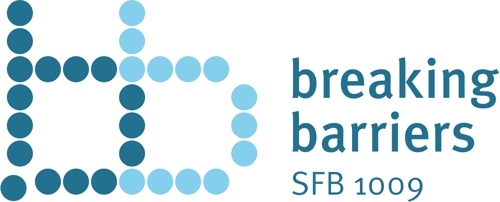Publications
Original articles
- Haub J, Roehrig N, Uhrin P, Schabhauer G, Eulberg D, Melchior F, Shahneh F, Probst HC, Becker C, Steinbrink K, Raker VK* (2019) Intervention of inflammatory monocyte activity limits dermal fibrosis. J Invest Dermatol in press; (Epub ahead of print; doi: 10.1016/j.jid.2019.04.006) (*contributed equally)
- Schmidt T, Lorenz N, Raker VK, Schmidgen MI, Mahnke K, Enk A, Roth J, Steinbrink K (2018) Allergen-Specific low zone tolerance is independent of MRP8/14-, TLR4-, TLR7-, and TLR9-mediated immune processes. J Invest Dermatol 138: 452-455.
- Haeberle S, Raker V, Haub J, Kim YO, Weng SY, Yilmaz OK, Enk A, Steinbrink K, Schuppan D*, Hadaschik EN* (2017) Regulatory T cell deficient-scurfy mice exhibit skin fibrosis and a Th2/M2-like inflammatory response resembling scleroderma. J Dermatol Sci 87: 285-291. (*contributed equally)
- Schmidt T, Lorenz N, Raker VK, Reißig S, Waisman A, Weigmann B, Steinbrink K (2016) Epicutaneous and oral low zone tolerance protects from colitis in mice. J Invest Dermatol 136: 1831-1839.
- Frick SU, Domogalla MP, Baier G, Wurm FR, Mailaender V, Landfester K, Steinbrink K (2016) IL-2 functionalized nanocapsules for T cell-based immunotherapy. ACS Nano 10: 9216-9226.
- Kryczanowsky F, Raker V, Graulich E, Domogalla MP, Steinbrink K (2016) IL-10-modulated human dendritic cells for clinical use: identification of a stable and migratory subset with improved tolerogenic activity. J Immunol 197: 3607-3617.
- Raker VK, Ook KY, Haub J, Lorenz N, Schmidt T, Stegemann A, Böhm M, Schuppan D, Steinbrink K (2016) Myeloid cell populations and fibrogenic parameters in bleomycin- and HOCl-induced fibrosis. Exp Dermatol 25: 887-894.
Impact on innate immune signals on hapten-specific immune reponses
The incidence of skin diseases is continuously rising in the western countries. The allergic contact dermatitis (ACD) is one of the most frequent occupational skin disorders leading to distress of the allergic patients and high socio-economical costs. Despite progress in elucidating the pathogenesis of this T cell-mediated allergic skin disease, efforts to target and develop effective and specific therapeutic strategies are still missing. Therefore, we have focused on the analysis of allergen (hapten)-specific immune repsonses in two different murine models: the contact hypersensitivity reaction (CHS), resembling the ACD in humans, and low zone tolerance (LZT), mimicking a physiologic mechanism for prevention of ACD development. Contact allergens have been shown to activate innate immune responses through pattern-recognition receptor-(PRR) mediated mechanisms. However, comprehensive findings in this field are still elusive. In our project, we will address the question how innate immune signals regulate adaptive immune responses in hapten-specific cutaneous immune reactions. Previously, we have identified TLR-2- and IL-10-mediated pathways and the gut-related microbiome as regulators of allergen-specific skin inflammation. In the context of these findings, we will focus on the underlying cellular and molecular mechanisms. In addition, we will analyze the role of myeloid cells (patrolling Ly6ClowCX3CR1high and inflammatory Ly6ChighCCR2high monocytes and macrophage sub-populations) on hapten-specific effector and regulatory T cell immune responses by affecting their number (transgenic/KO mice, depletion) and differentiation/migration (ISG/Nur77, CCR2/CCL2 pathways), by imaging experiments and molecular analysis (NGS, Nanostring technology). In collaboration with several projects within this initiative, analysis of hapten-specific tolerance and immune responses may result in the development of novel preventive and therapeutic approaches for inflammatory skin diseases.
Research area: Skin immunology
Prof. Dr. Kerstin Steinbrink
Funding period: July 2020 - June 2024

